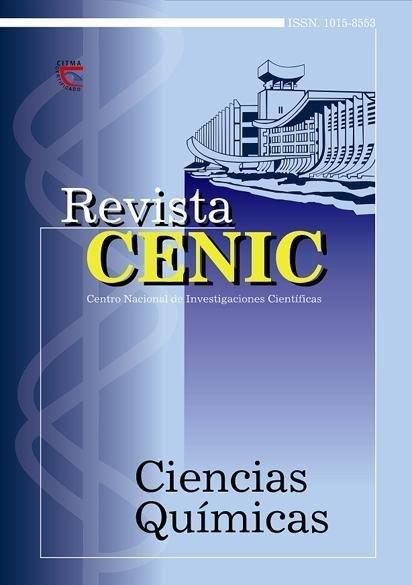Ozonización del aceite de girasol. Seguimiento de la reacción por Resonancia Magnética Nuclear protónica
Abstract
Prior studies have proven that proton Nuclear Magnetic Resonance technique can be used to follow up ozone reaction with unsaturated fatty acids. In this paper, ozonation of sunflower oil at a different applied ozone dosage was carried out and peroxide index and aldehydes contents were determined. The reaction products were identified using Proton Nuclear Magnetic Resonance Spectroscopy (1H NMR). The principal signal intensities values were used for following the reaction course between ozone and sunflower oil. The reaction was following up to peroxide index values of 1 202 mmol-equiv/kg. The intensities of olefinic proton signals decreased with the gradual increase in ozone concentration but without disappearing completely. The Criegee ozonides obtained at 107.1 mg/g of ozone doses were approximately 7.4 folds higher than that at the beginning of reaction. The aldehyde protons were observed as a weak intensity signal in all the spectra. The signals belonging to olefinic protons from hydroperoxides appeared weak with the increase in ozone doses. Signals from other oxygenized groups were assigned. It was concluded that the higher applied ozone doses the higher the ozonation reaction advance corresponding with a higher oxygenized compounds formation.

Downloads
Published
How to Cite
Issue
Section
License
Copyright (c) 2005 Copyright (c) 2005 Revista CENIC Ciencias Químicas

This work is licensed under a Creative Commons Attribution-NonCommercial-ShareAlike 4.0 International License.
Los autores que publican en esta revista están de acuerdo con los siguientes términos:
Los autores conservan los derechos de autor y garantizan a la revista el derecho de ser la primera publicación del trabajo al igual que licenciado bajo una Creative Commons Atribución-NoComercial-CompartirIgual 4.0 que permite a otros compartir el trabajo con un reconocimiento de la autoría del trabajo y la publicación inicial en esta revista.
Los autores pueden establecer por separado acuerdos adicionales para la distribución no exclusiva de la versión de la obra publicada en la revista (por ejemplo, situarlo en un repositorio institucional o publicarlo en un libro), con un reconocimiento de su publicación inicial en esta revista.
Se permite y se anima a los autores a difundir sus trabajos electrónicamente (por ejemplo, en repositorios institucionales o en su propio sitio web) antes y durante el proceso de envío, ya que puede dar lugar a intercambios productivos, así como a una citación más temprana y mayor de los trabajos publicados (Véase The Effect of Open Access) (en inglés).













